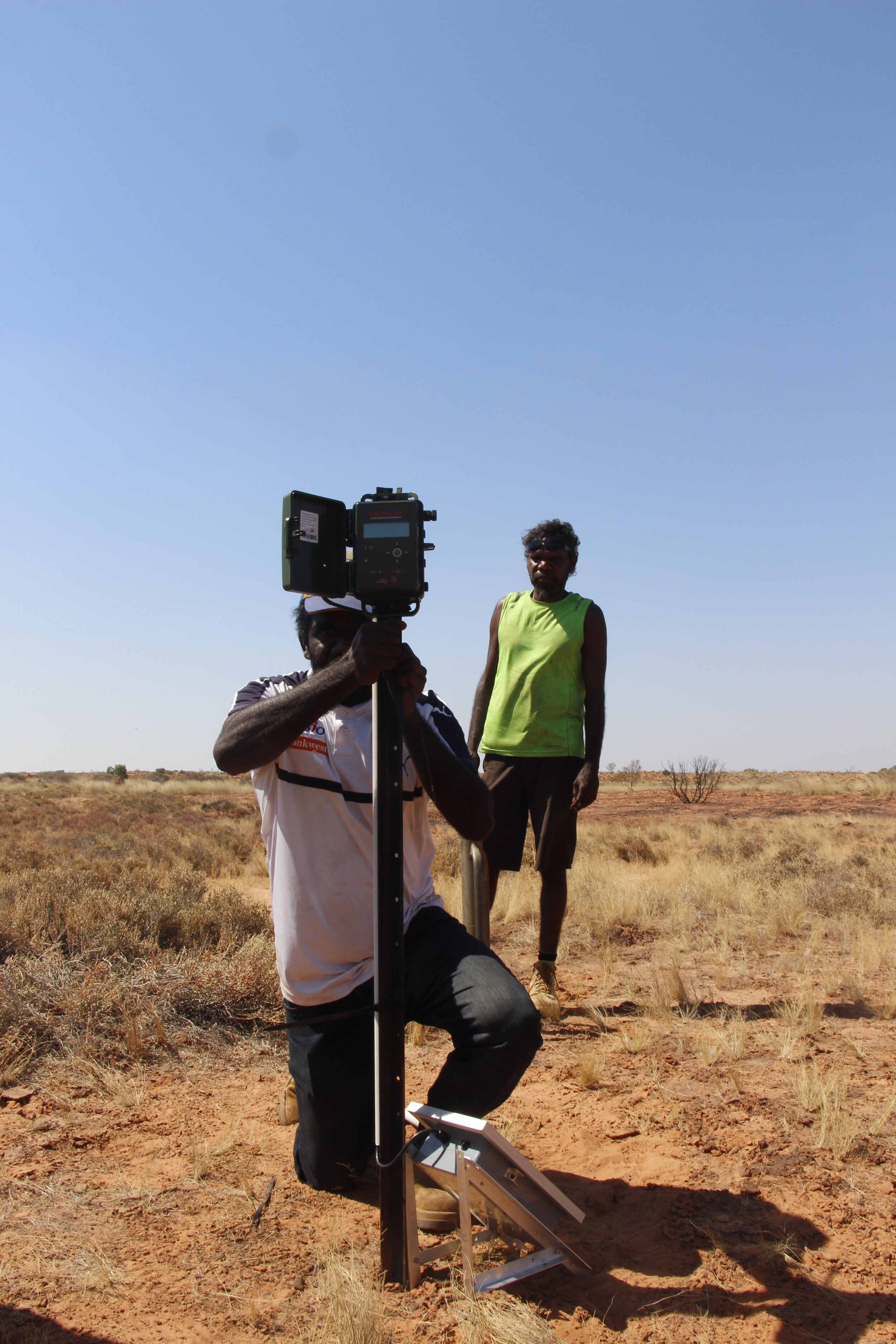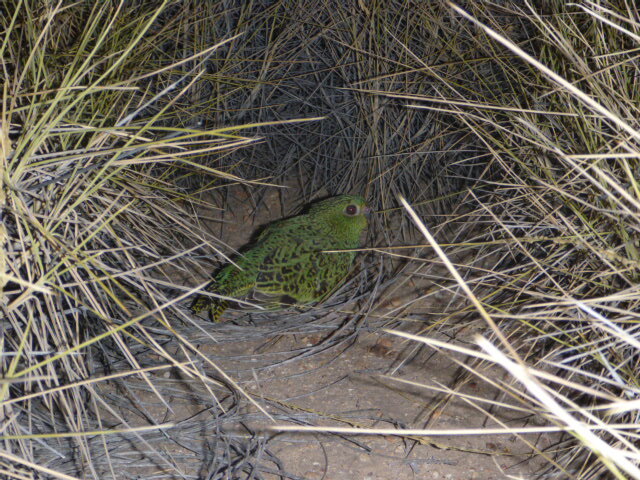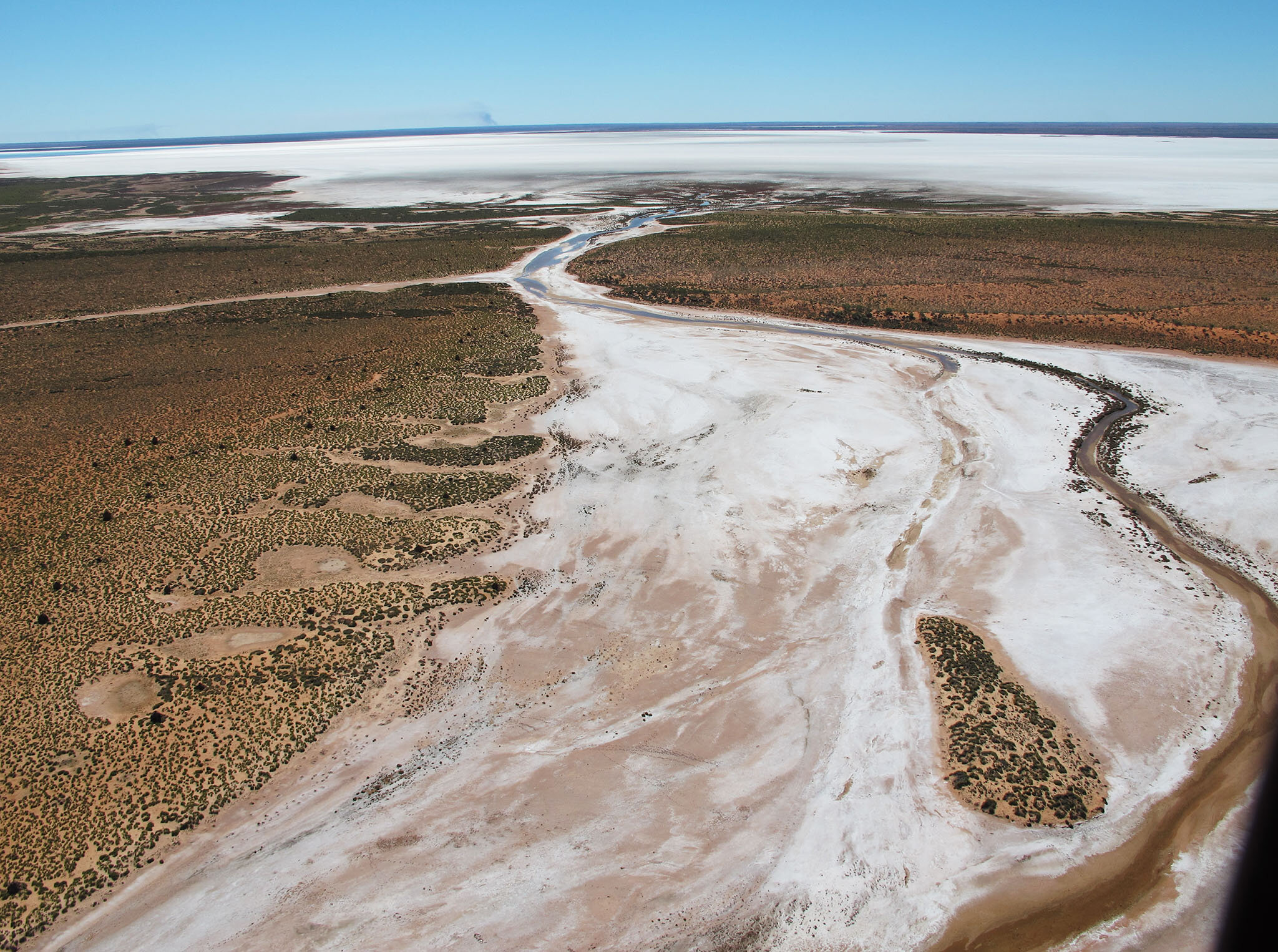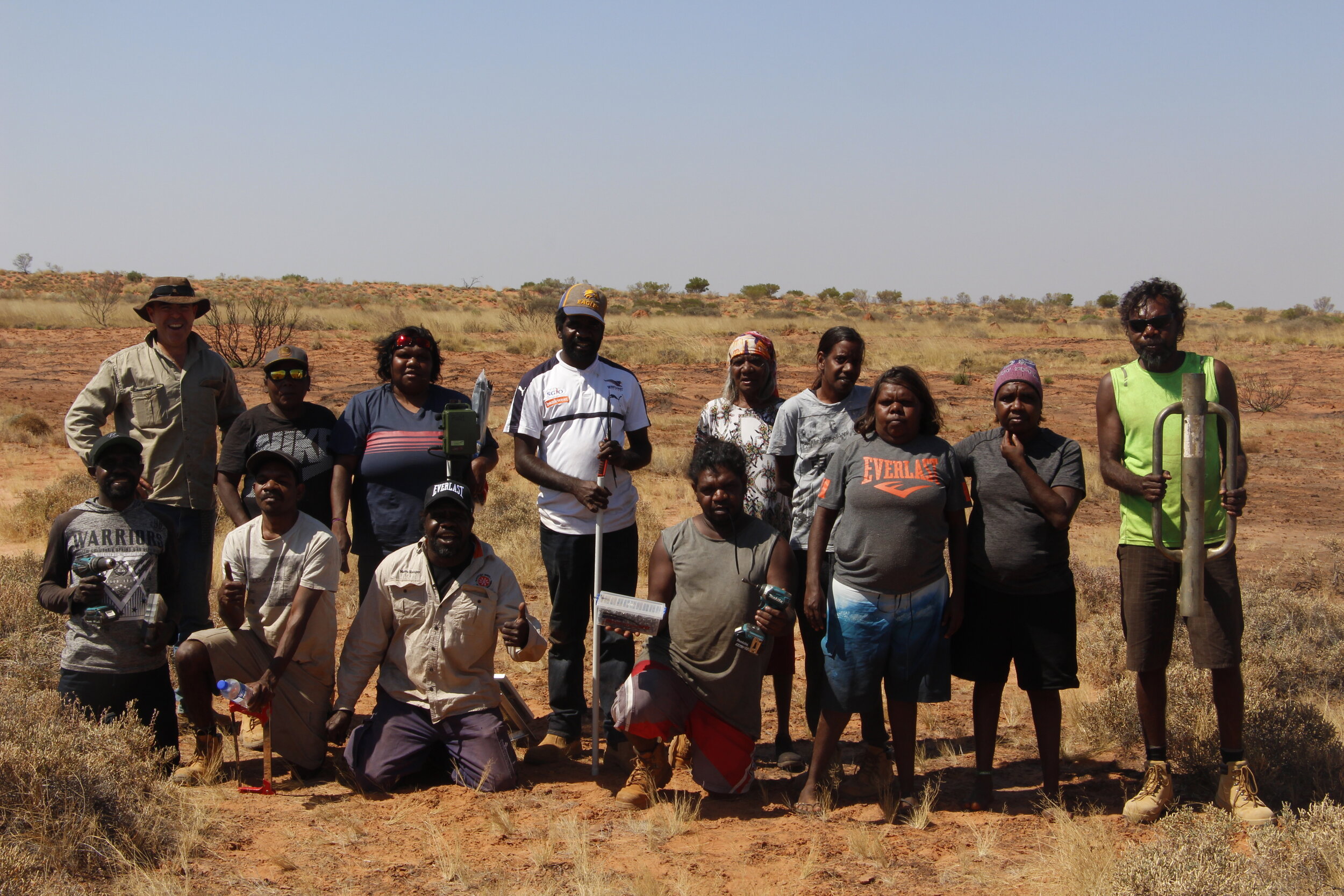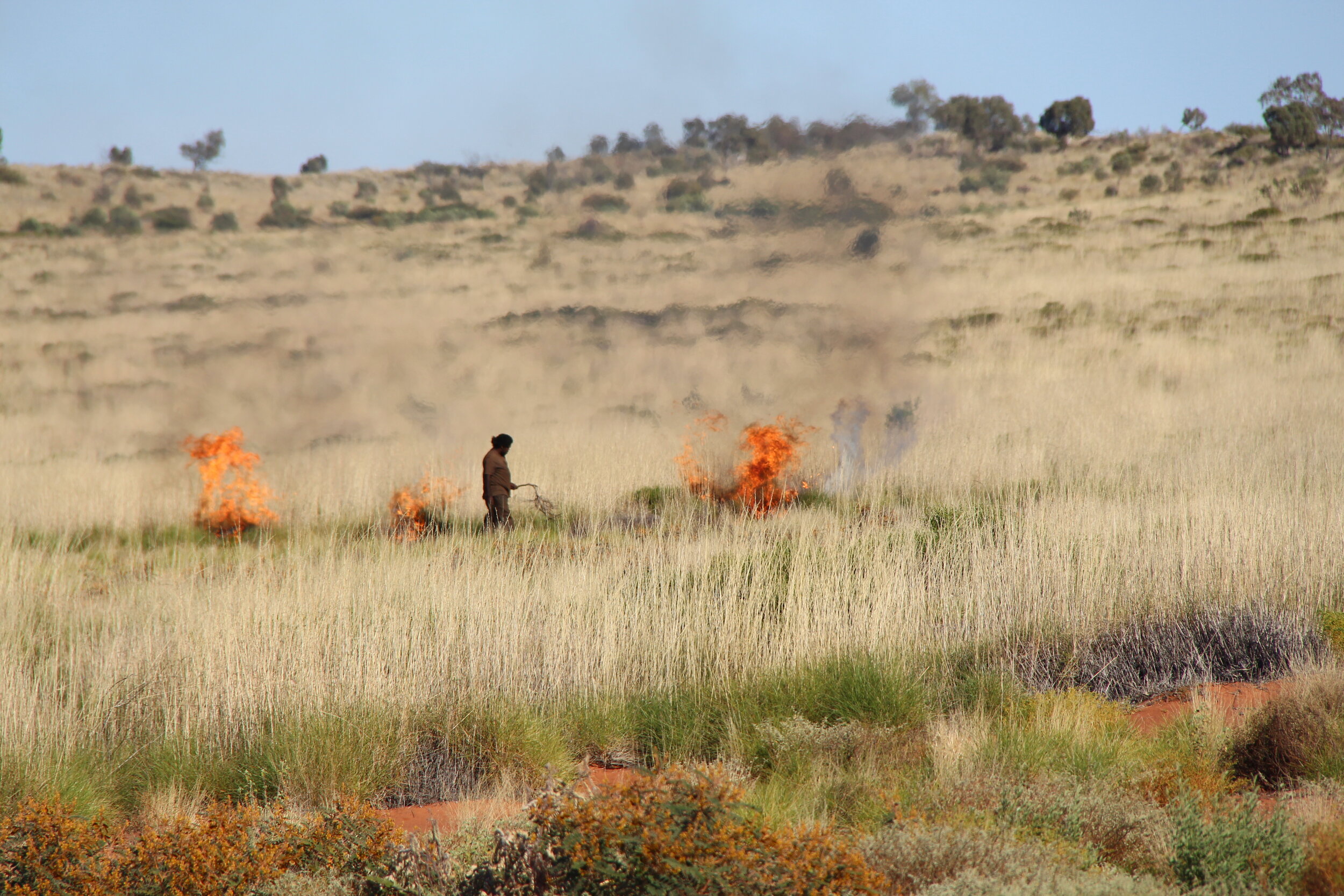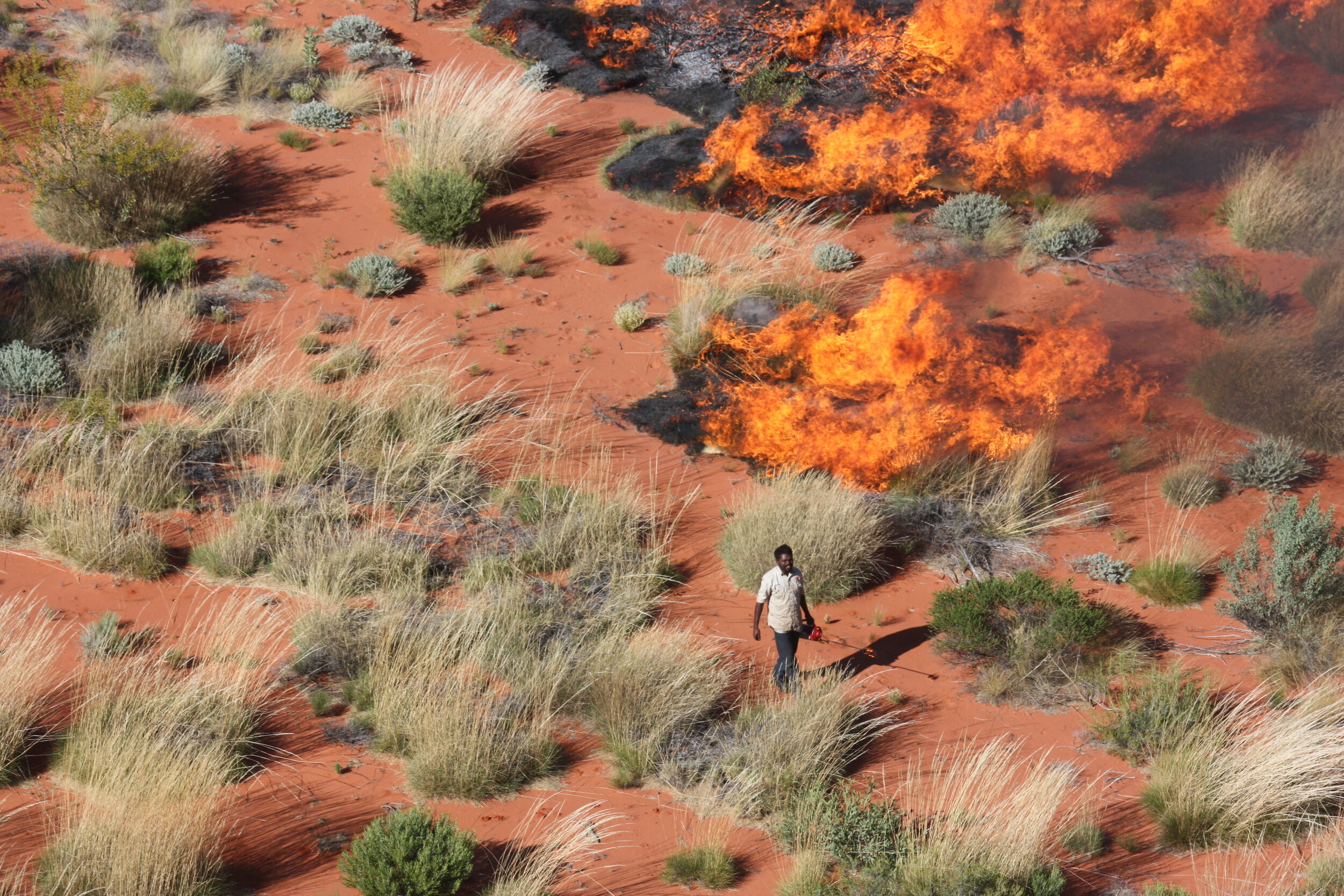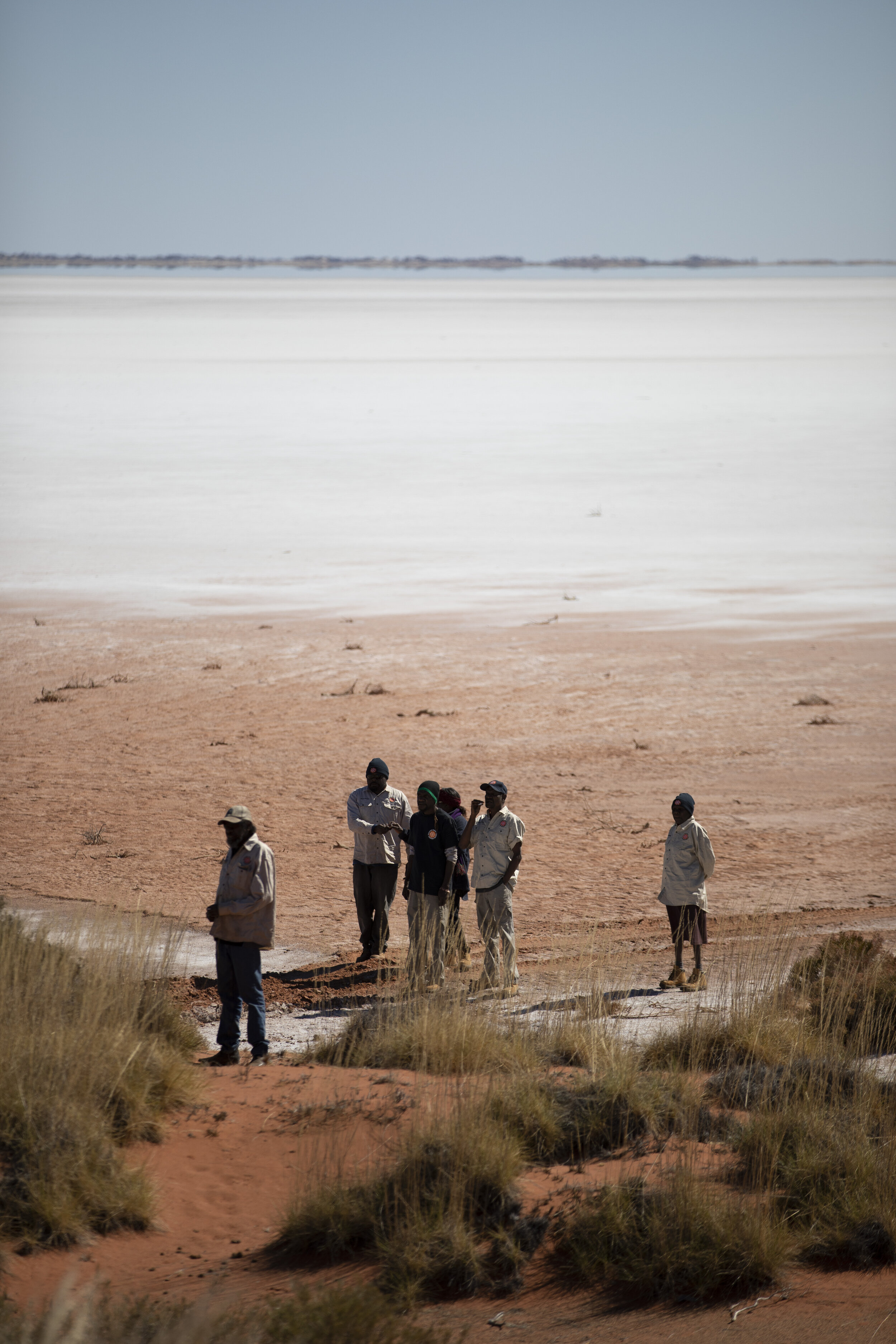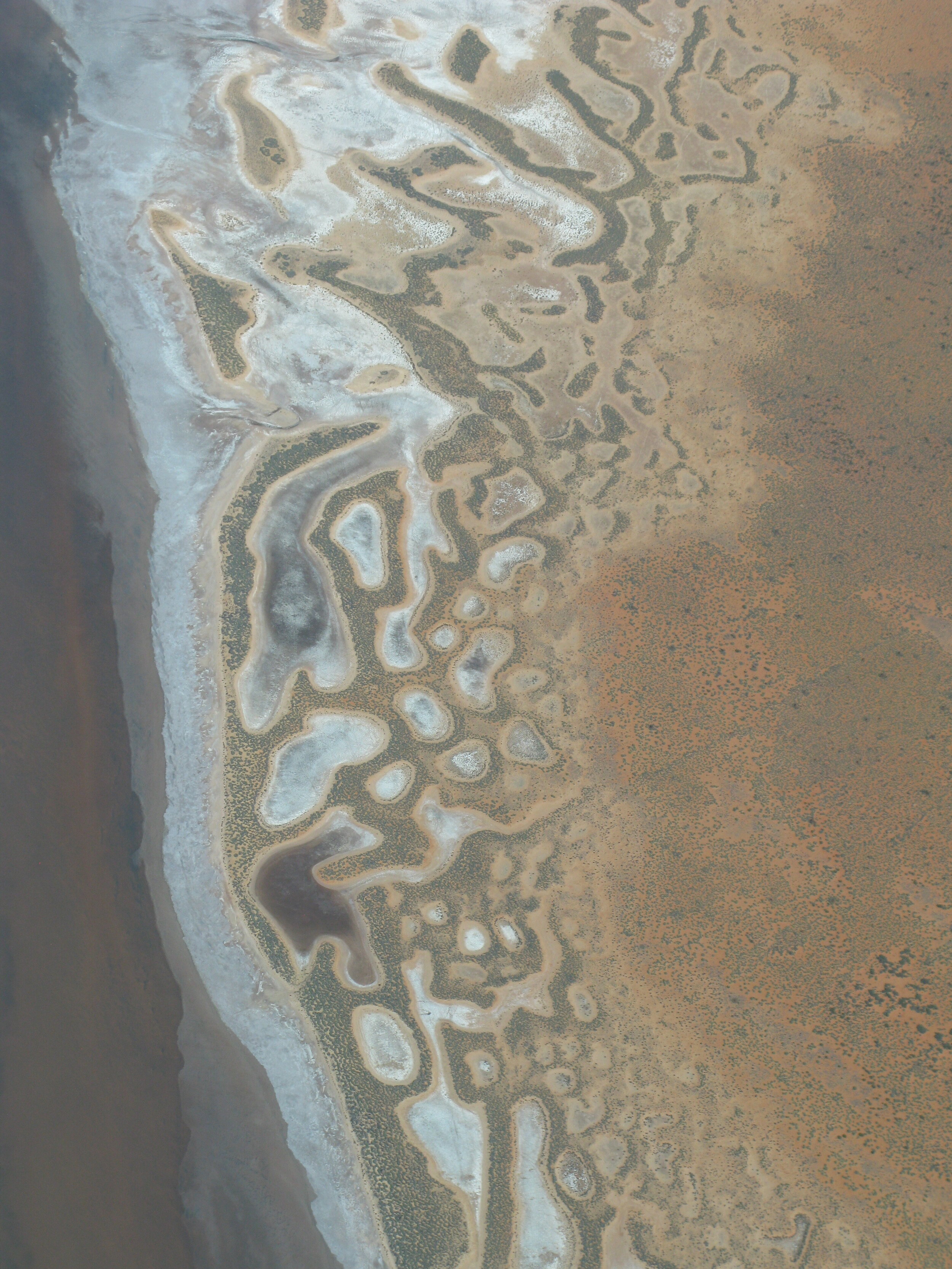Night Parrots found on Martu Country!
Martu rangers have successfully located the elusive Night Parrot in remote salt lake country in Western Australia. For two years, Kanyirninpa Jukurrpa’s ranger teams have been using sound recorders to search for the mysterious birds which are one of the rarest in the world. Experts from the University of Queensland have been assisting the search and, to the rangers’ delight, the hard work has finally paid off!
“I feel really good to have found that Night Parrot, we were lucky to put that sound recorder in the right spot,” said Martu ranger Gavin Nanudie.
The find highlights the critical work undertaken by Indigenous rangers to look after their country. Martu rangers manage over 14 million hectares of country in the Great Sandy and Little Sandy deserts including Karlamilyi National Park.
It is the fifth confirmed location of the Night Parrot in Western Australia, adding to a growing body of knowledge regarding their ecology in the region. Four of the five records are associated with salt lake systems that offer protection from large fires and provide important feeding and roosting areas for the critically endangered species. “We found them in the lake area where the feed and water and big spinifex is” continued Mr Nanudie.
The rangers are now focussed on two priorities: finding other populations of night parrots and locating the roosting site of the recent find. As the search spreads out across Martu Country, the results will inform the rangers ongoing management of the region. “We’ll keep looking for them around the lakes. If we find that nest, we’ll do a little bit of burning, not too much, to protect them” said Mr Nanudie.
The search for the Night Parrot has been a collaborative effort between Kanyirninpa Jukurrpa and Dr Stephen Murphy from the University of Queensland, and was made possible by the Aboriginal Ranger Program funded by the Western Australian Department of Biodiversity, Conservation and Attractions. The project has combined the Martu rangers’ local knowledge of their country with Dr Murphy’s experience researching the species in Queensland. “The recent discovery of Night Parrots on Martu country is a great example of two-way science, where detailed knowledge of country was combined with knowledge of Night Parrot ecology to identify the kinds of places the species might persist. The discovery illustrates how supporting people to be on country - which maintains and builds knowledge - can lead to nationally significant conservation outcomes” said Dr Murphy.
The Night Parrot is the latest addition to a growing list of threatened species that find refuge on Martu Country. The Martu rangers actively manage populations of the Greater Bilby, the Great Desert Skink, and the Black-flanked Rock-wallaby. They have also recently confirmed the presence of the Pilbara Leaf-nosed Bat. Martu elders guide the work of the rangers in keeping country and culture strong. “All the future generations should be working to look after country, burning the right way, looking after Rock-wallabies and digging out waterholes,” said Mukki Taylor OAM, KJ’s Senior Cultural Advisor.
30 July 2020

